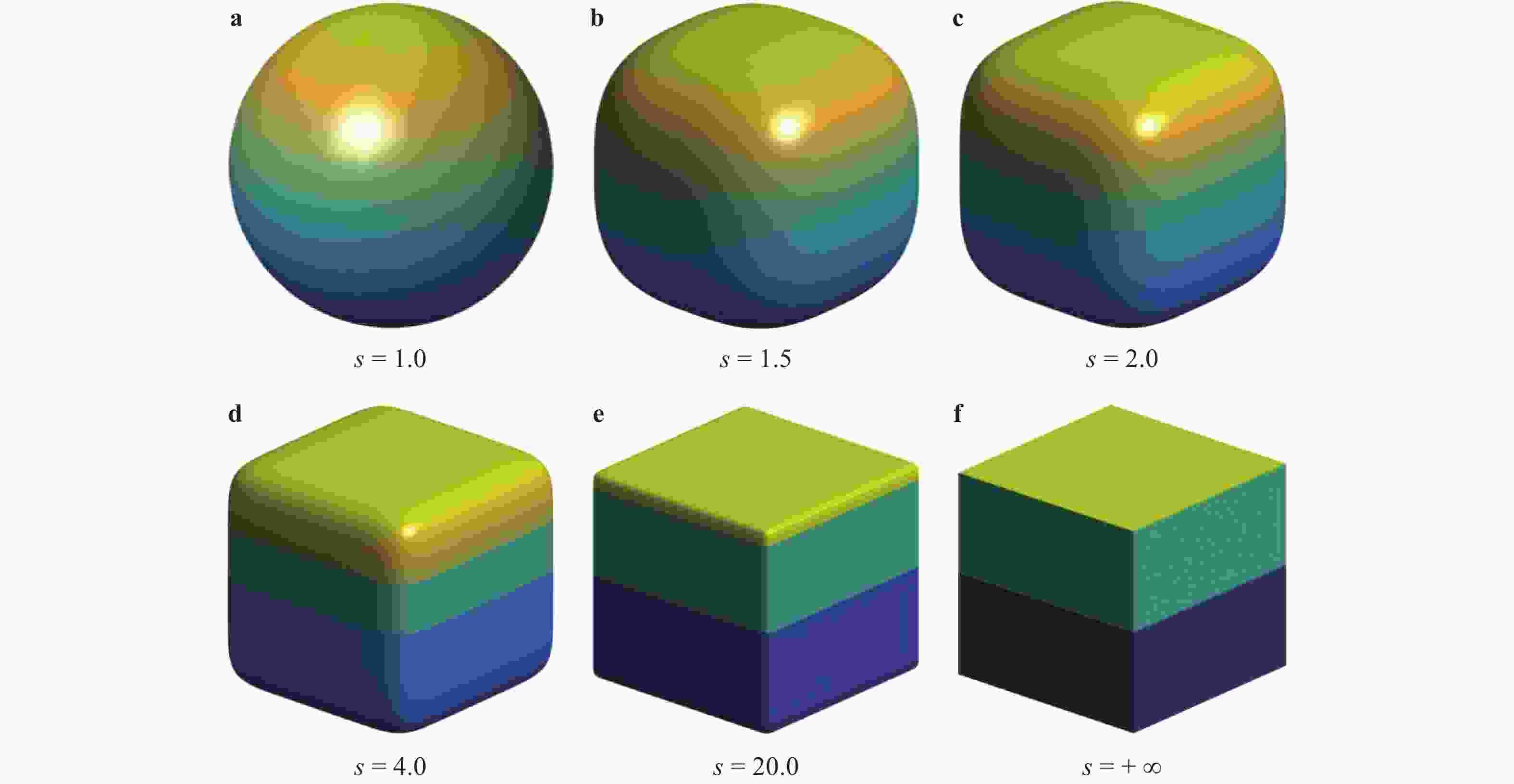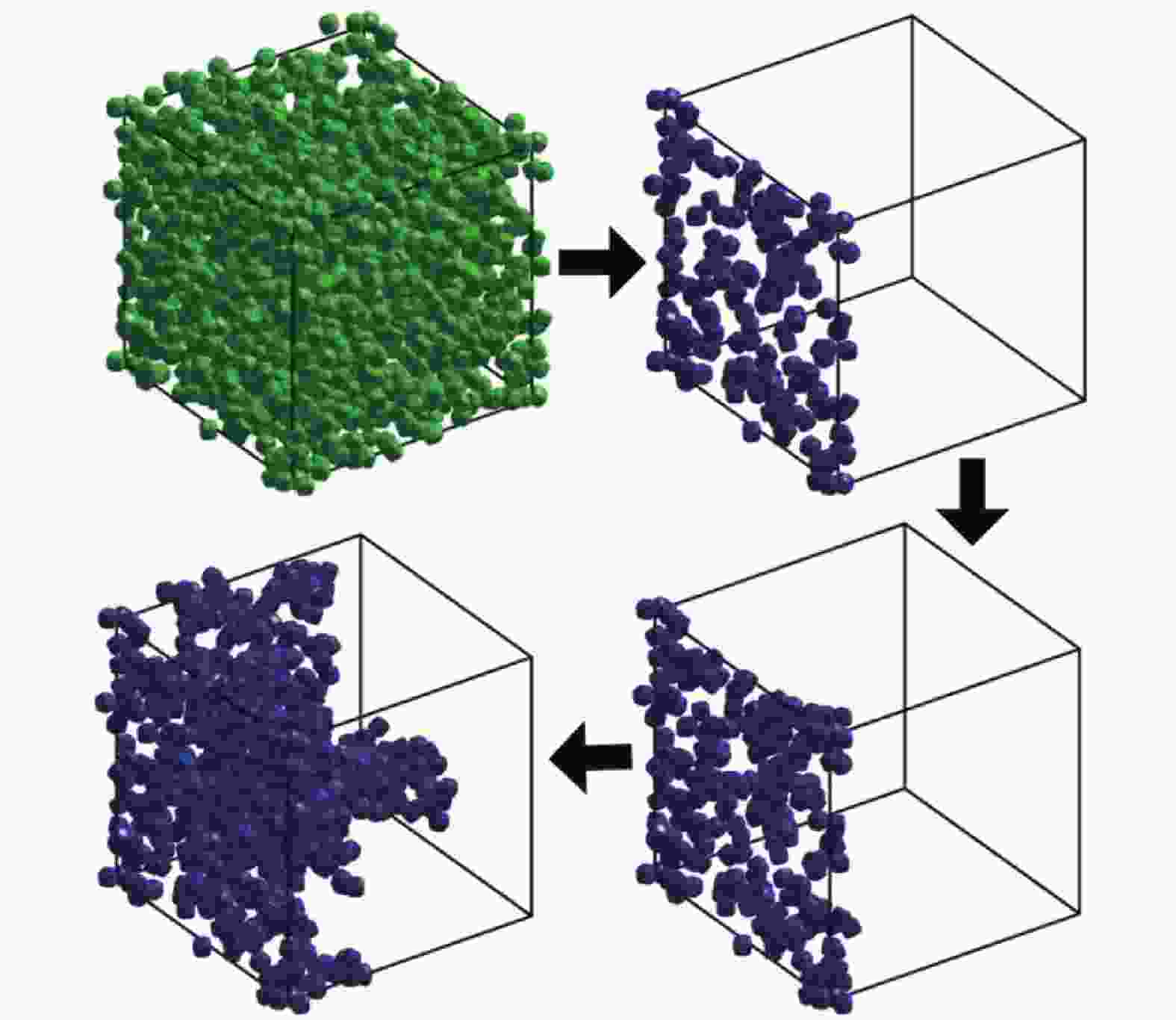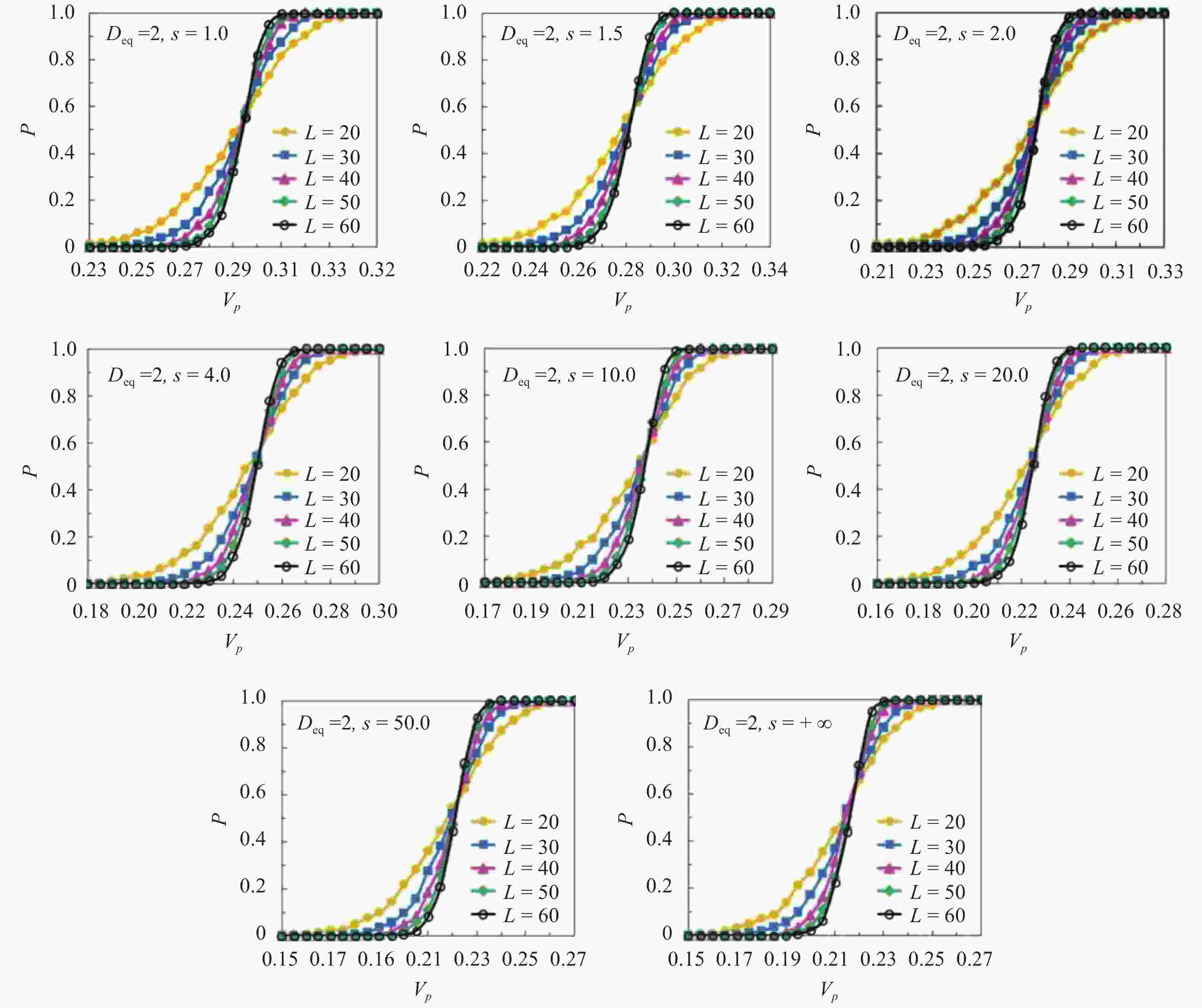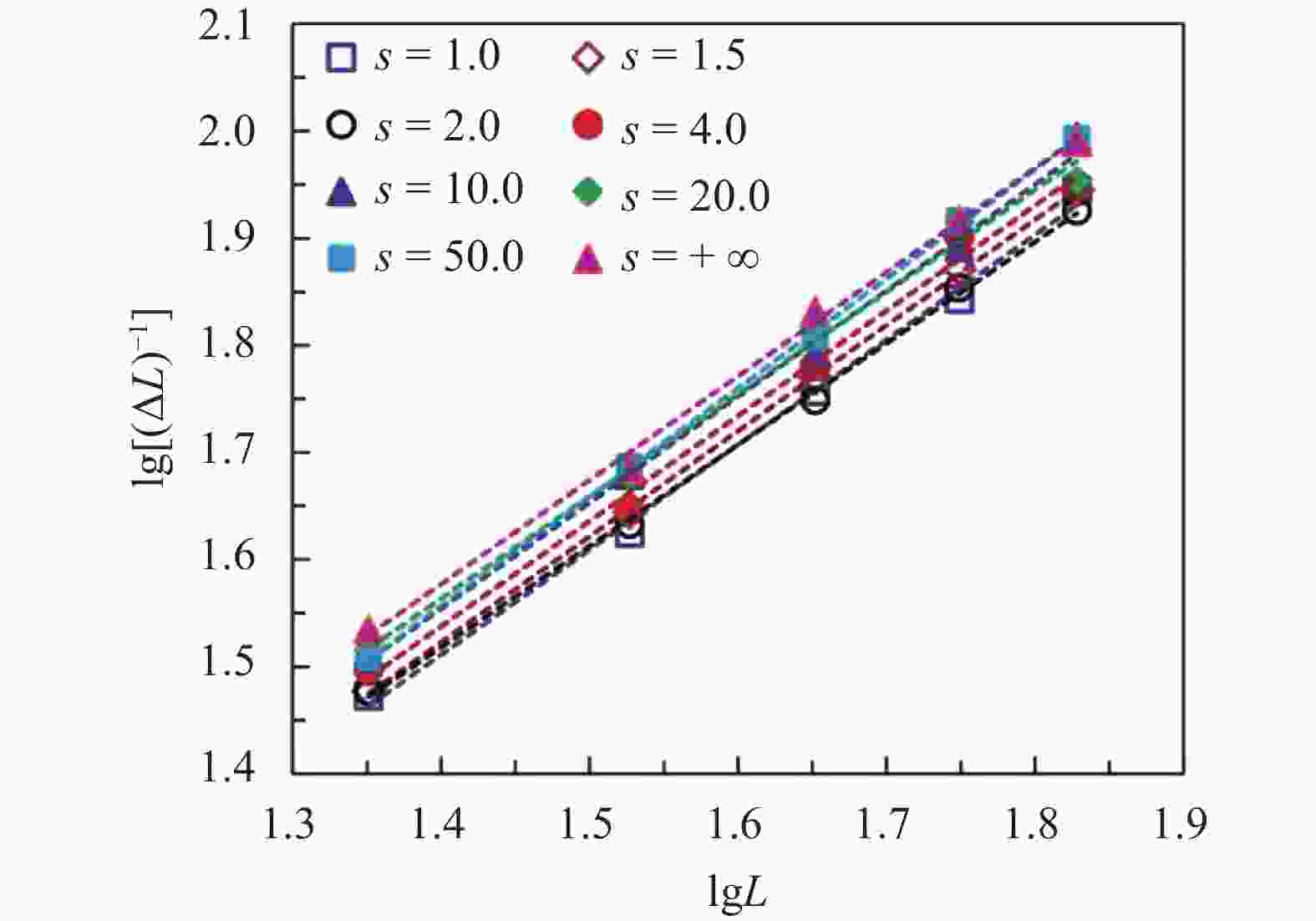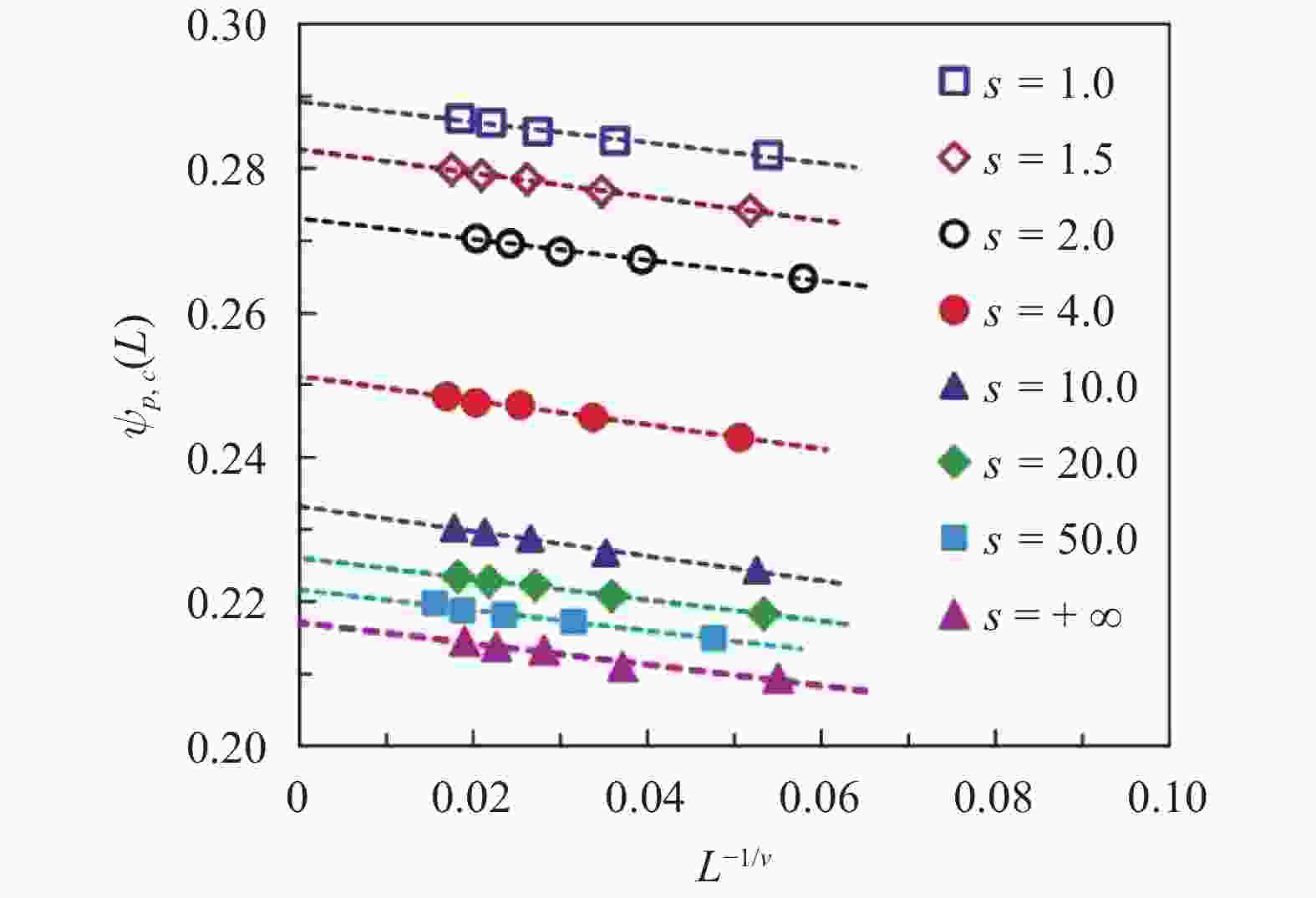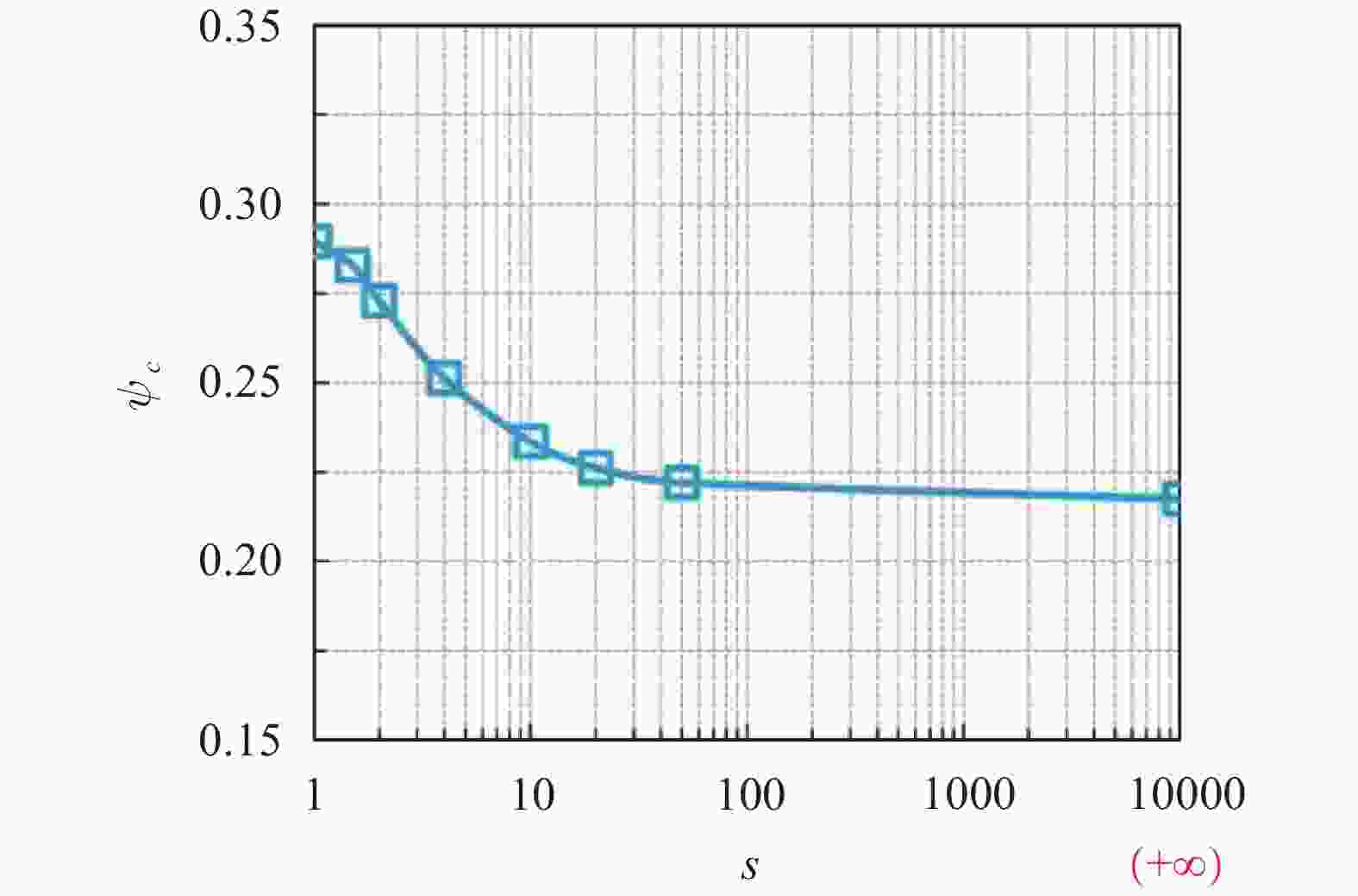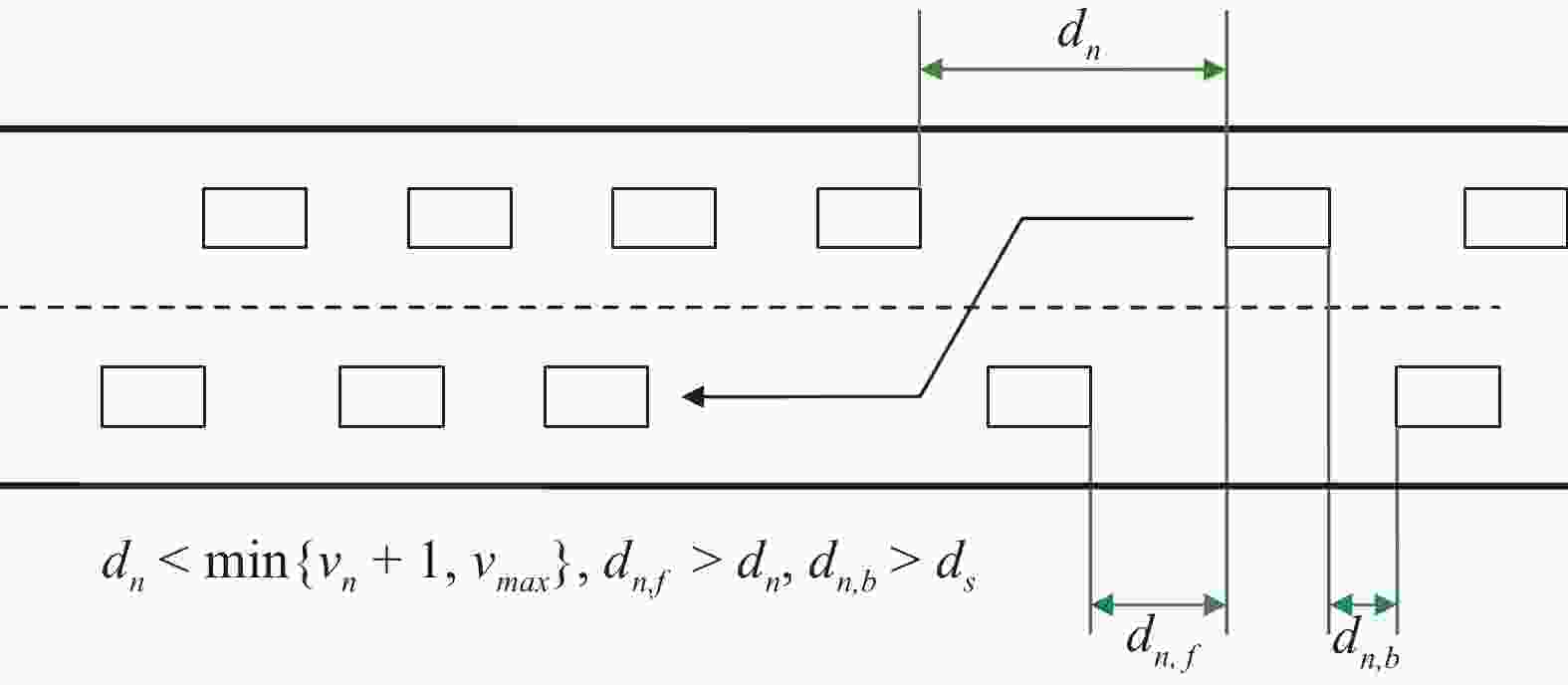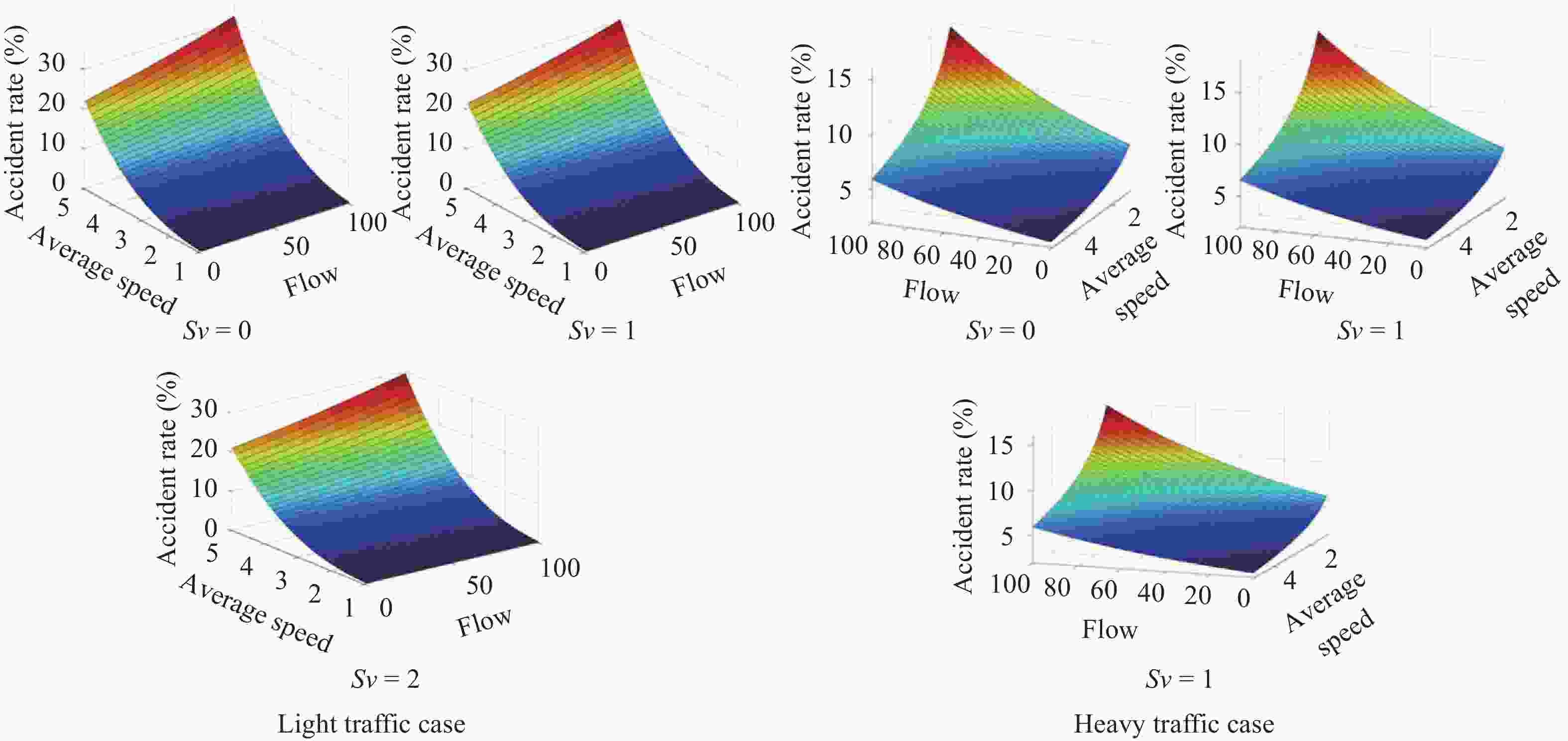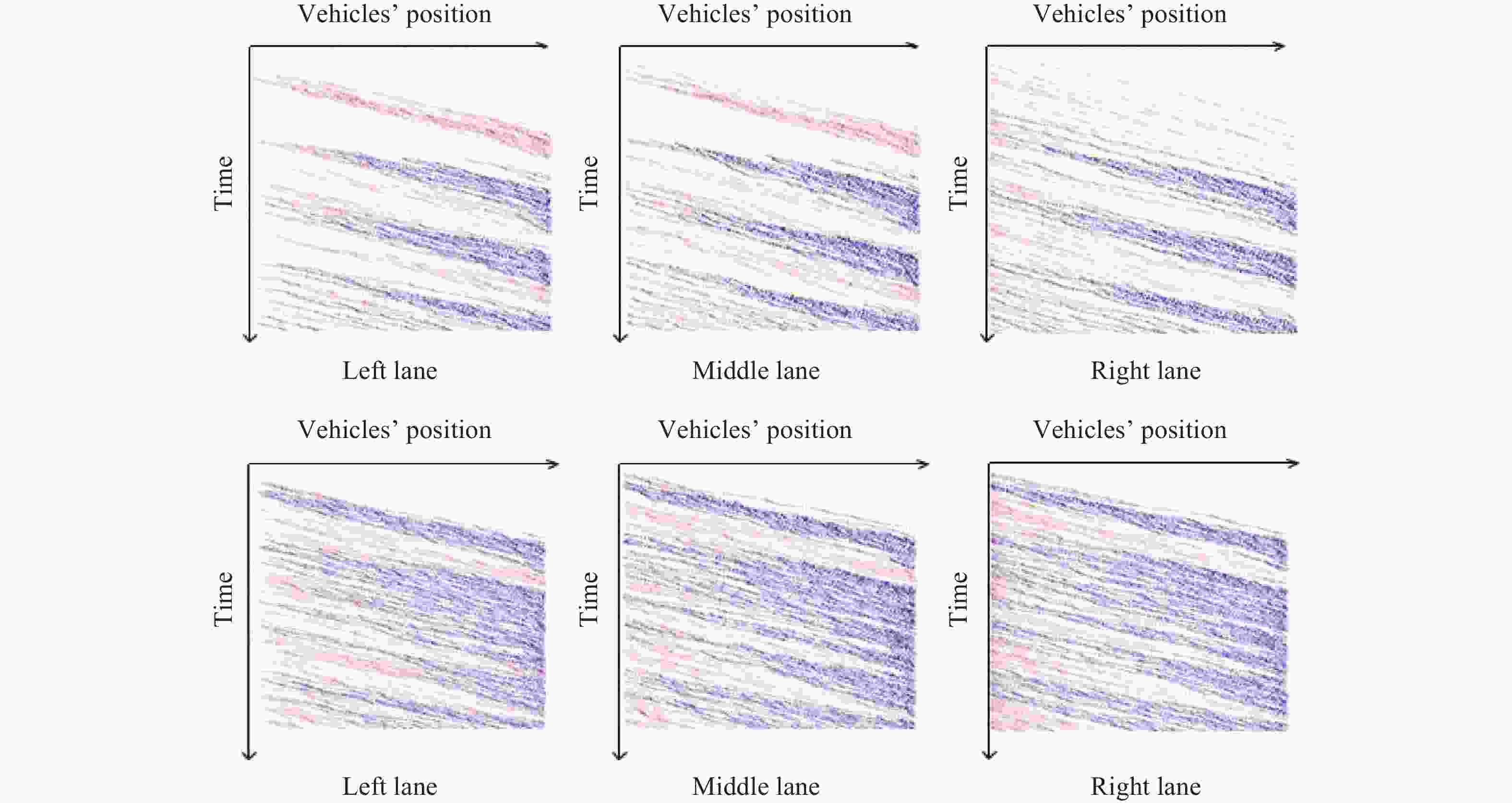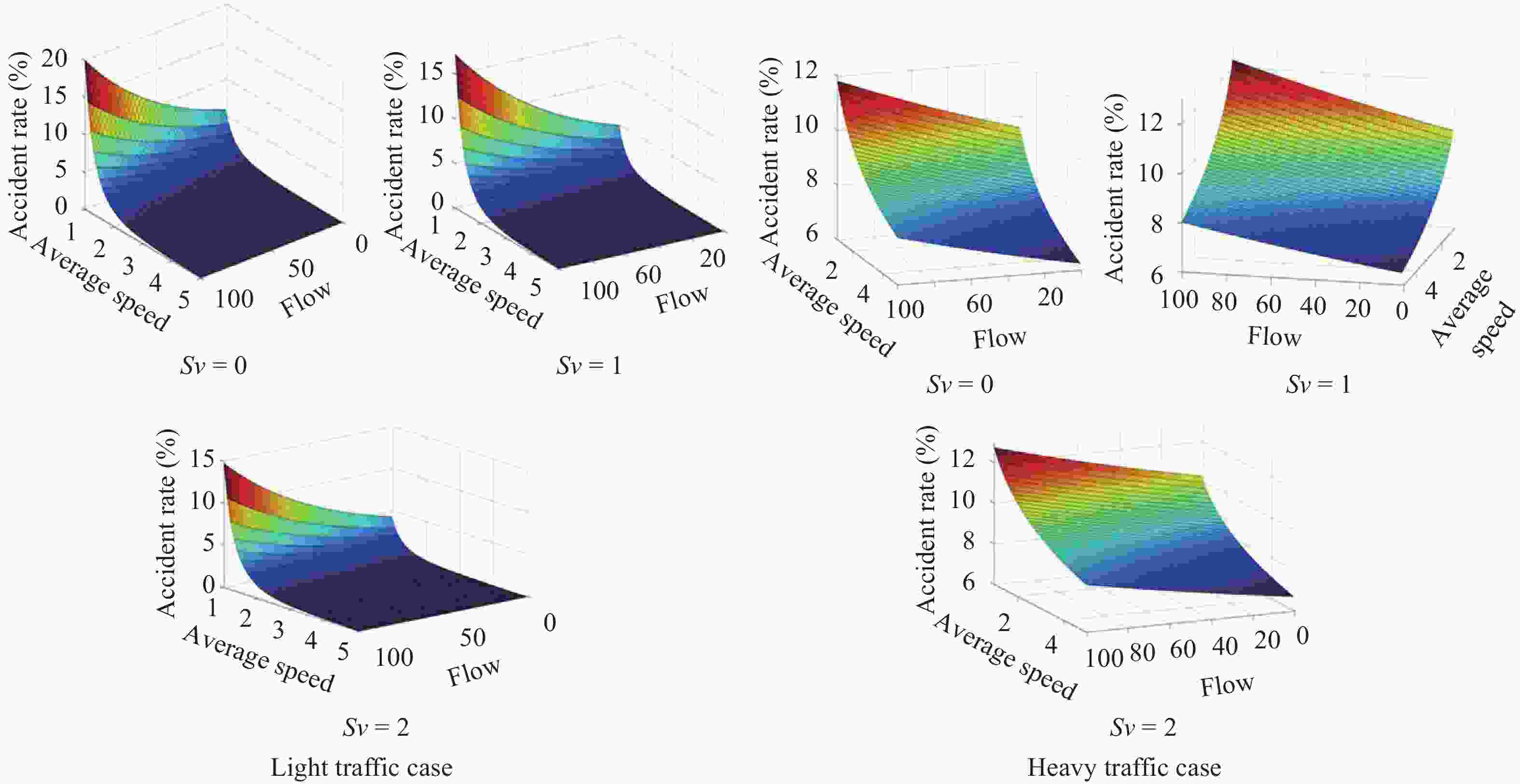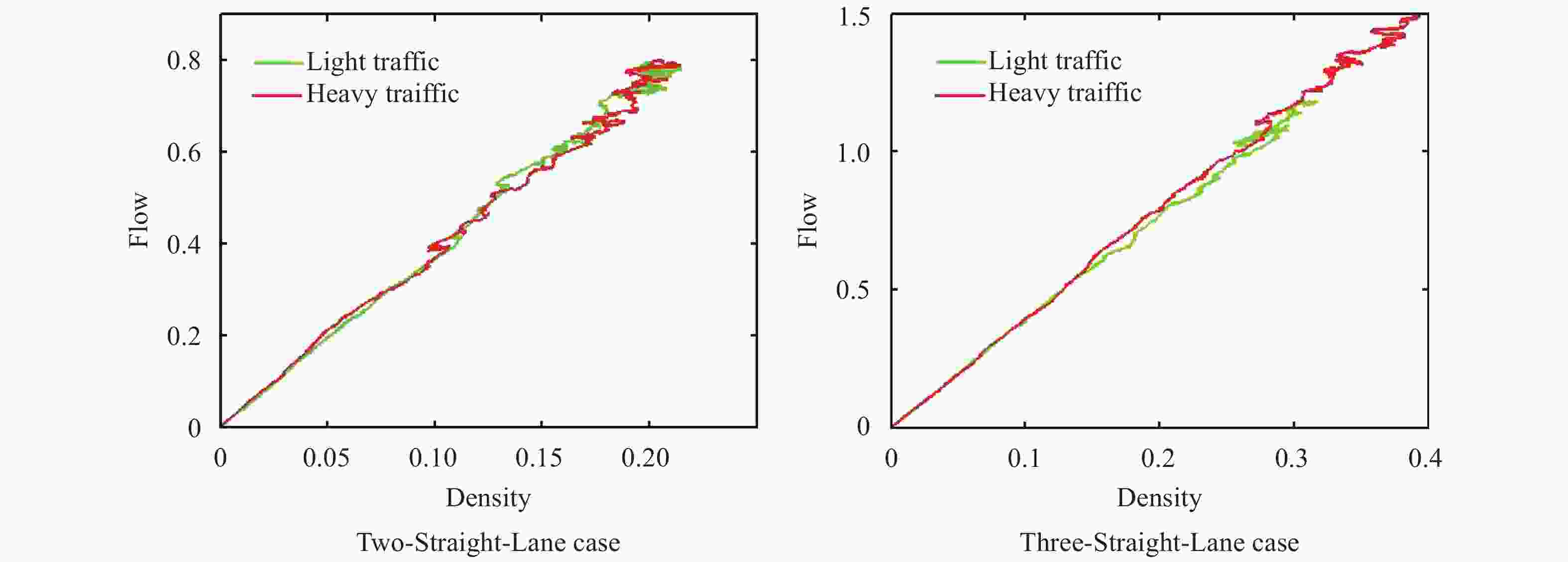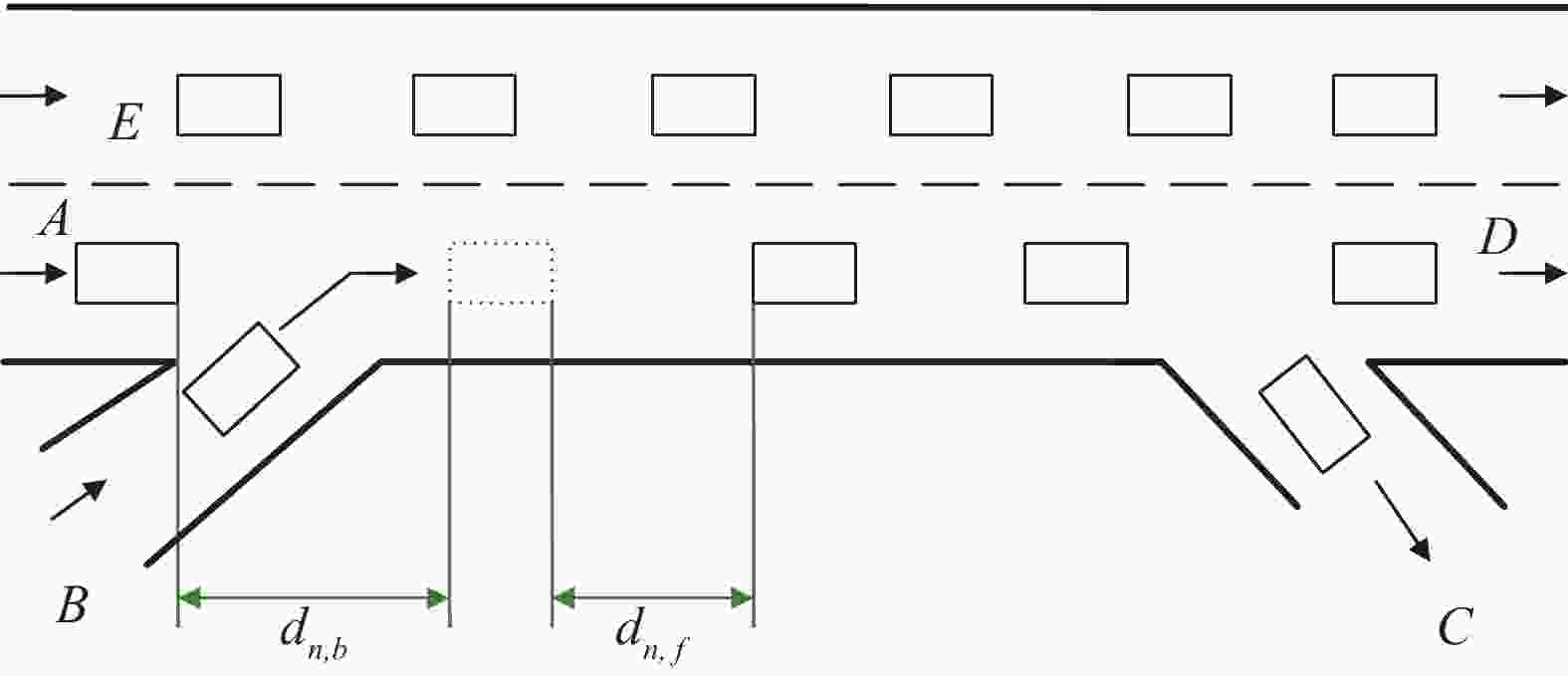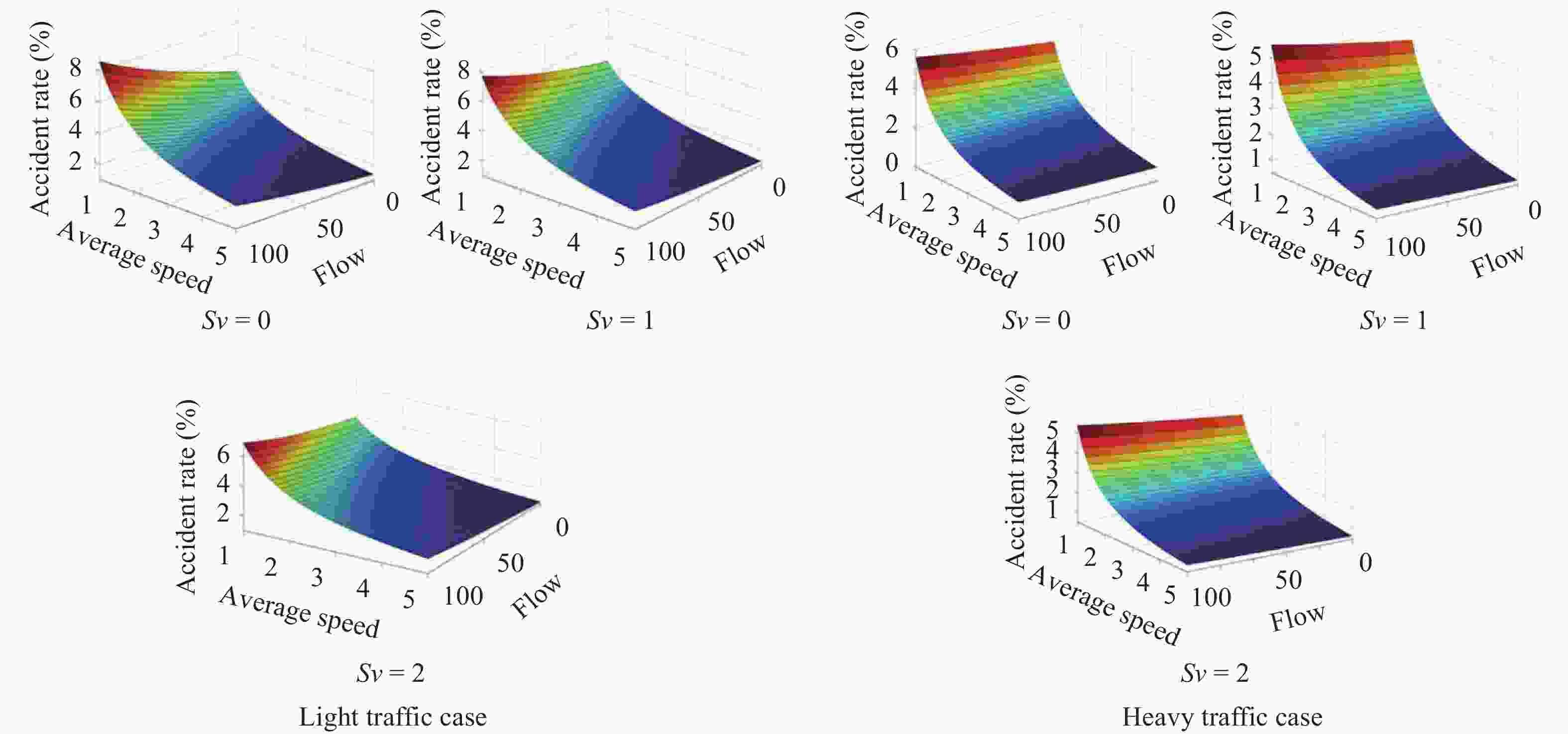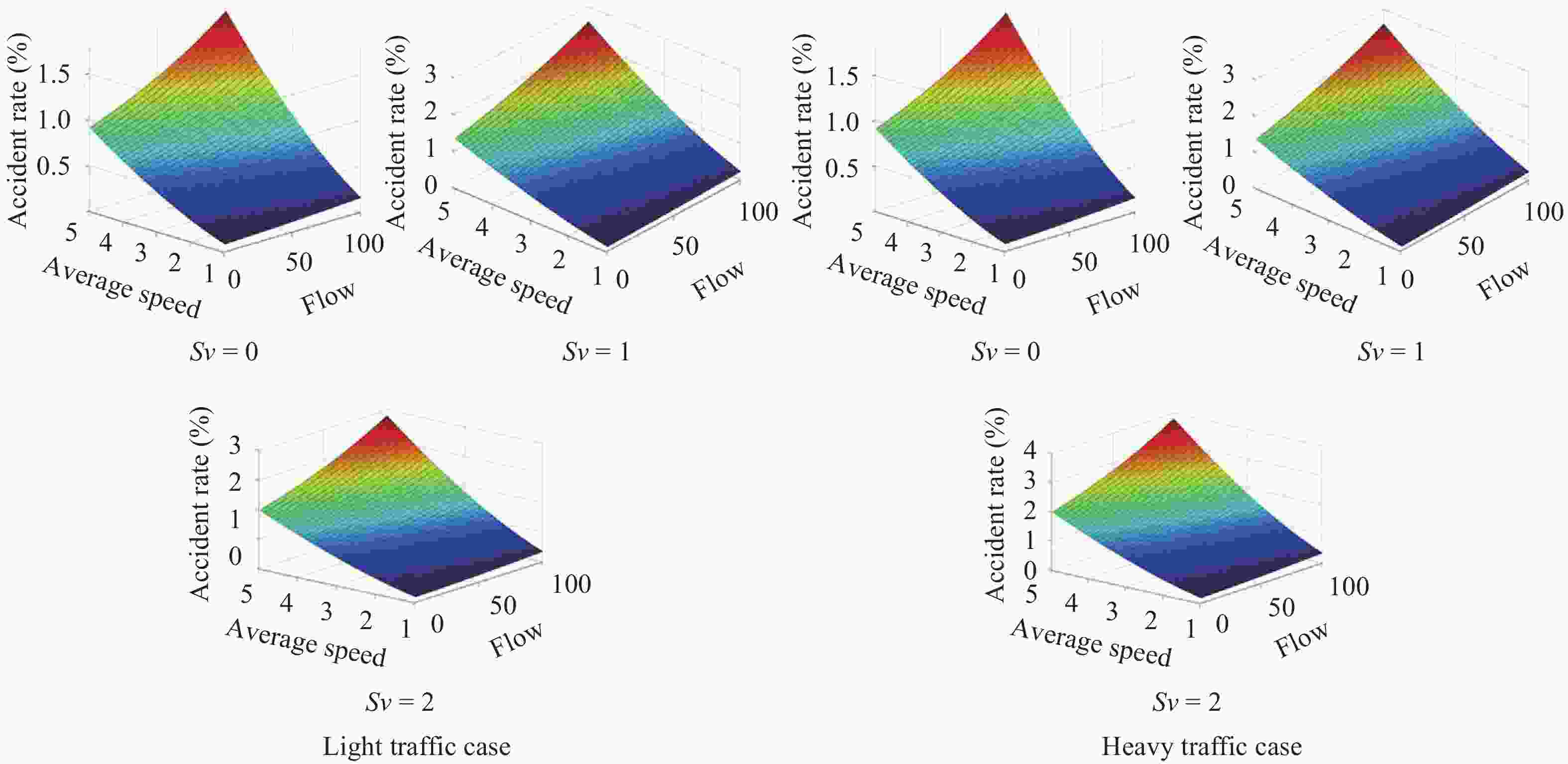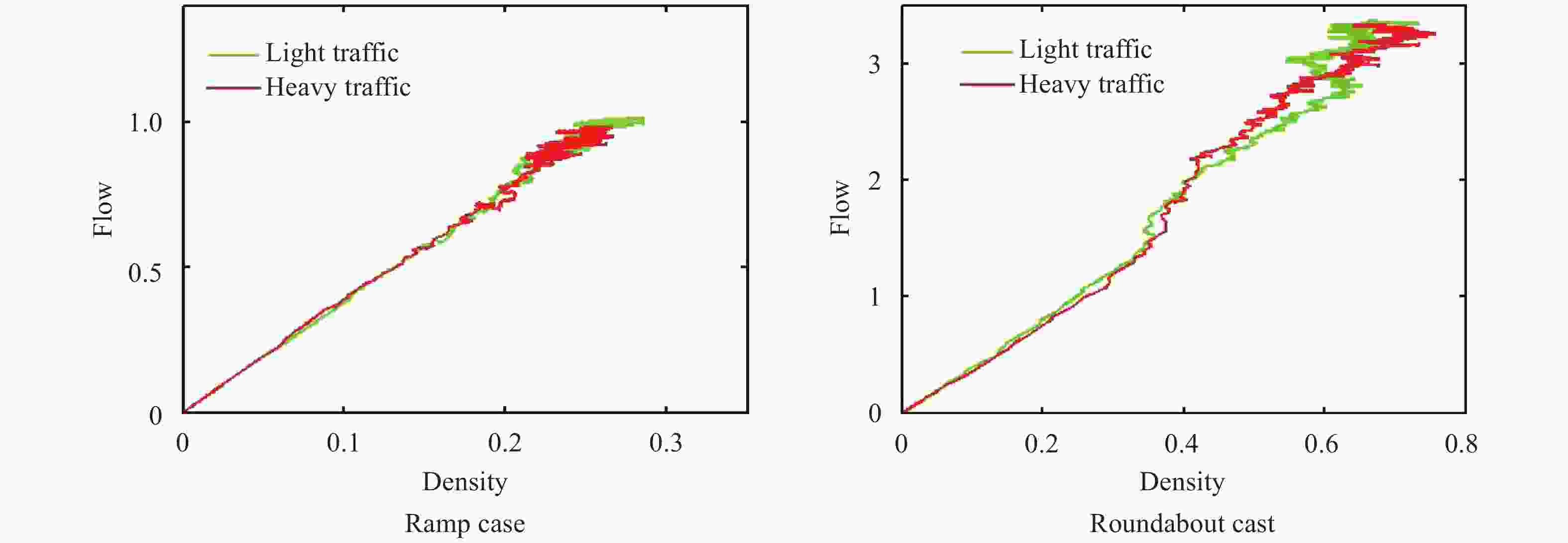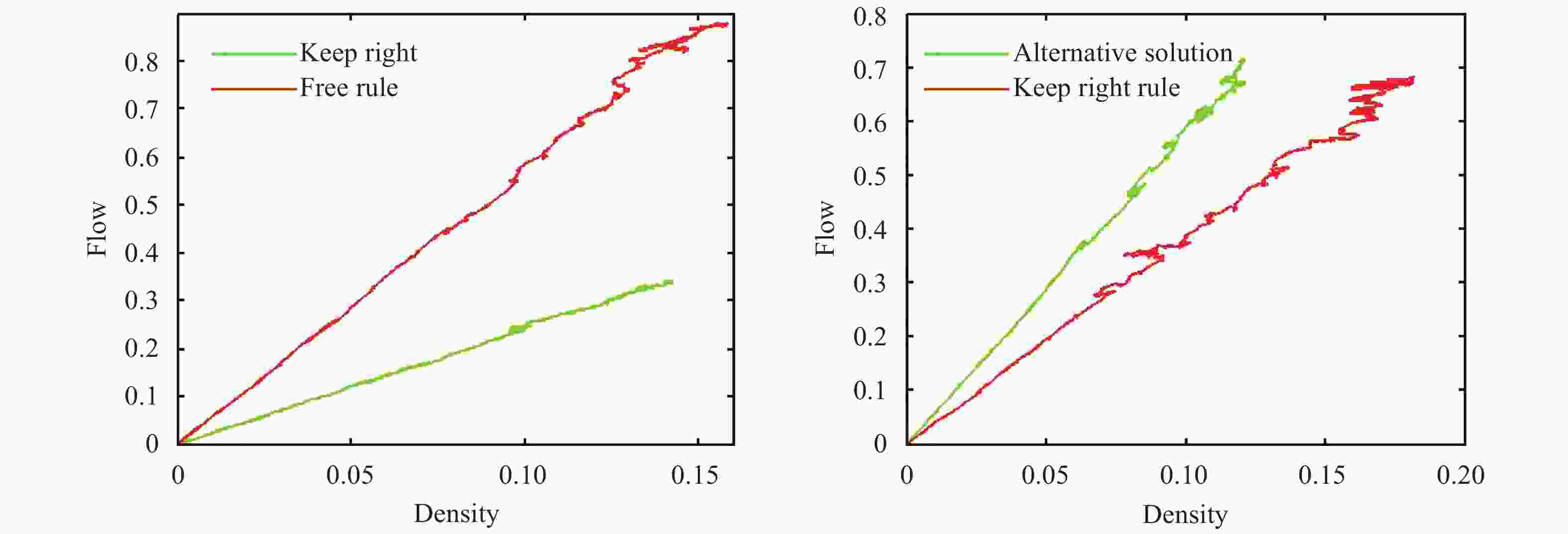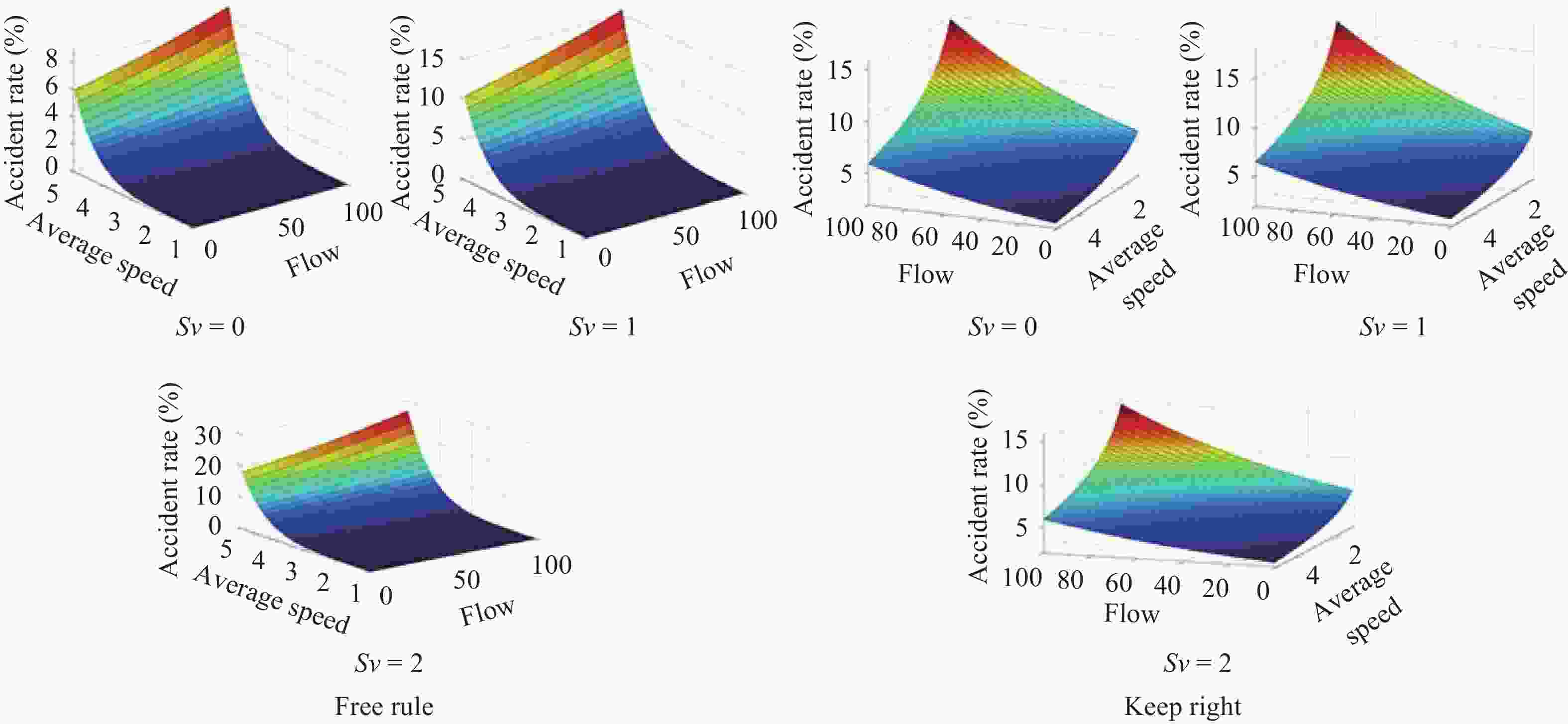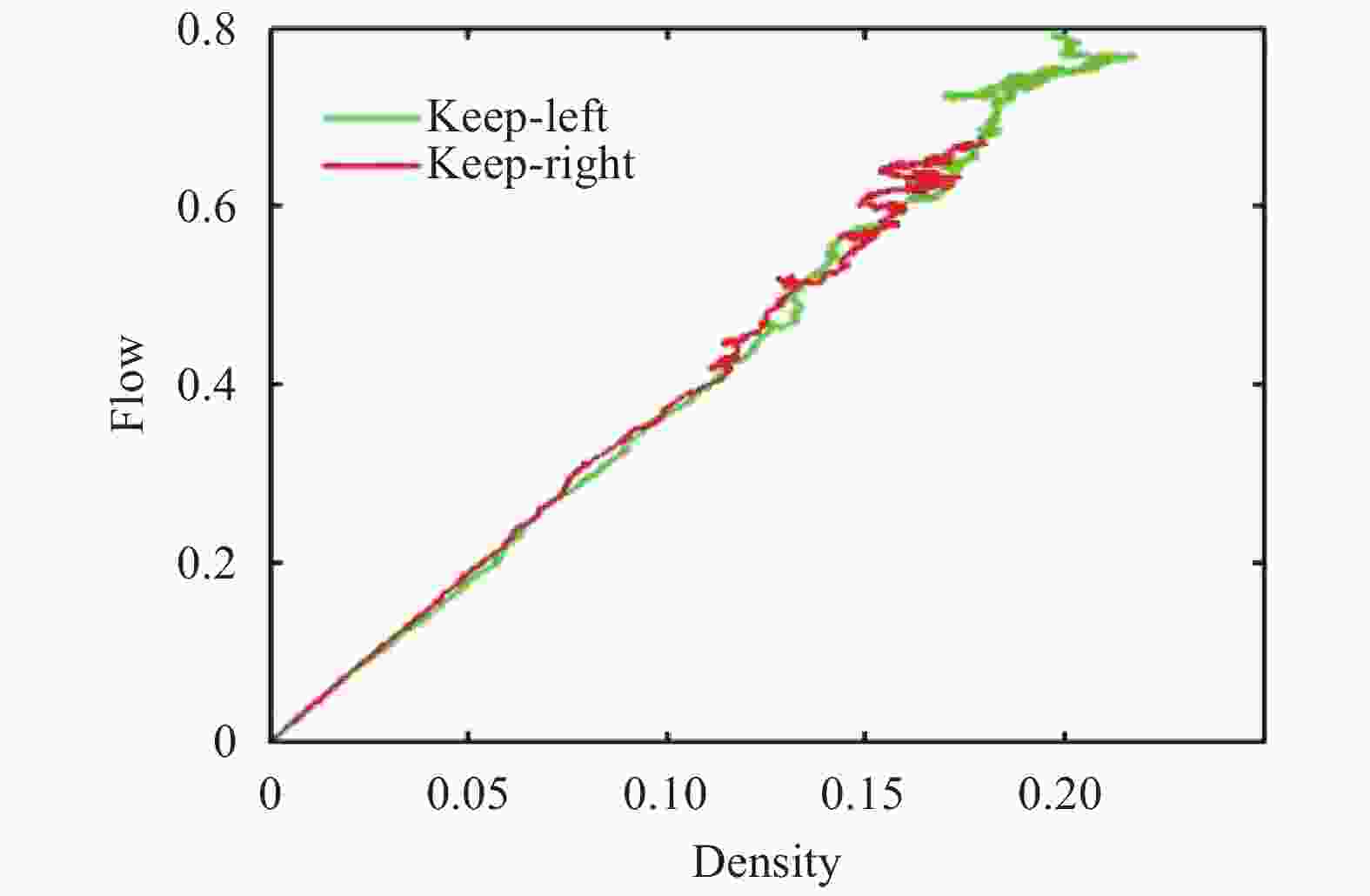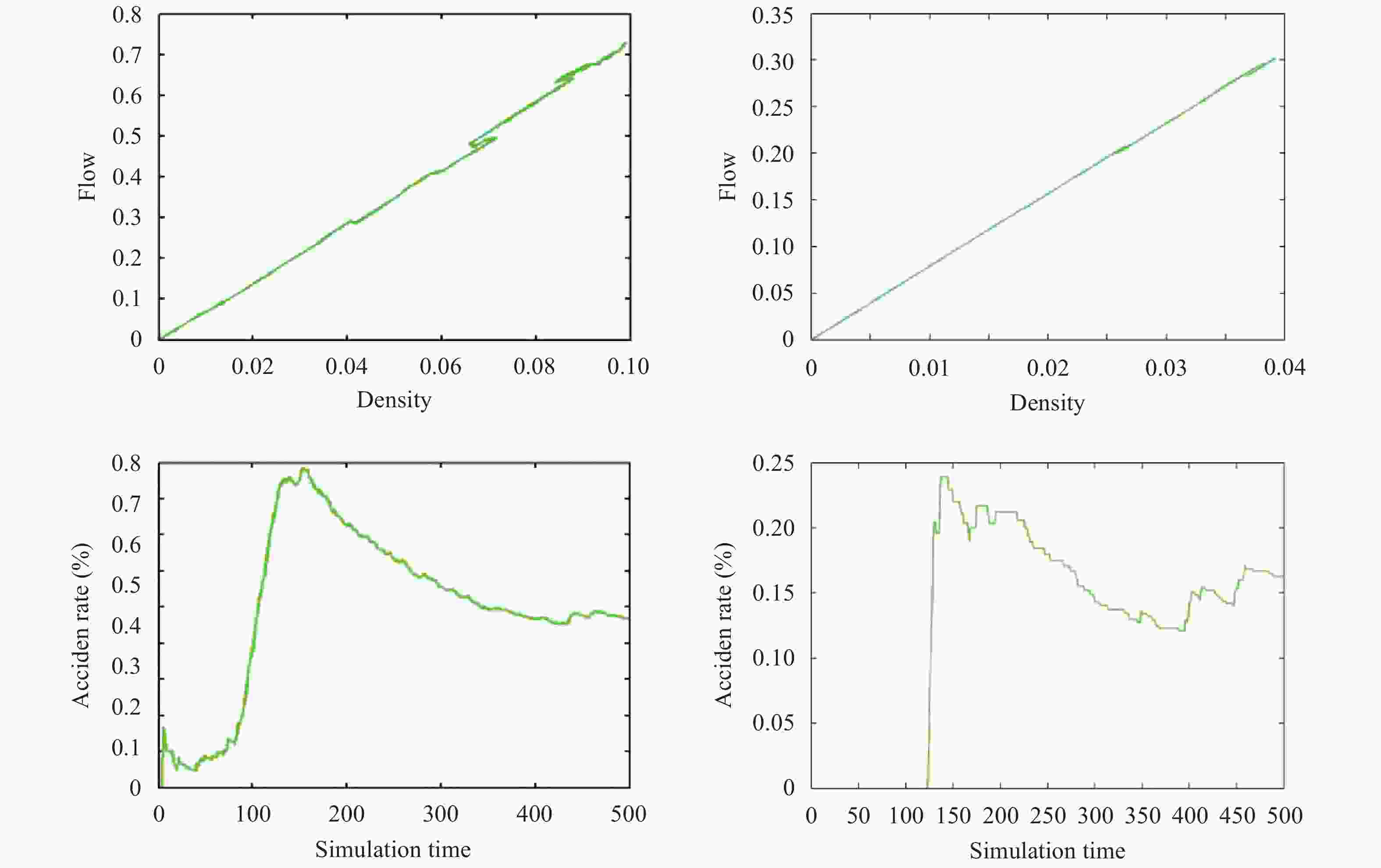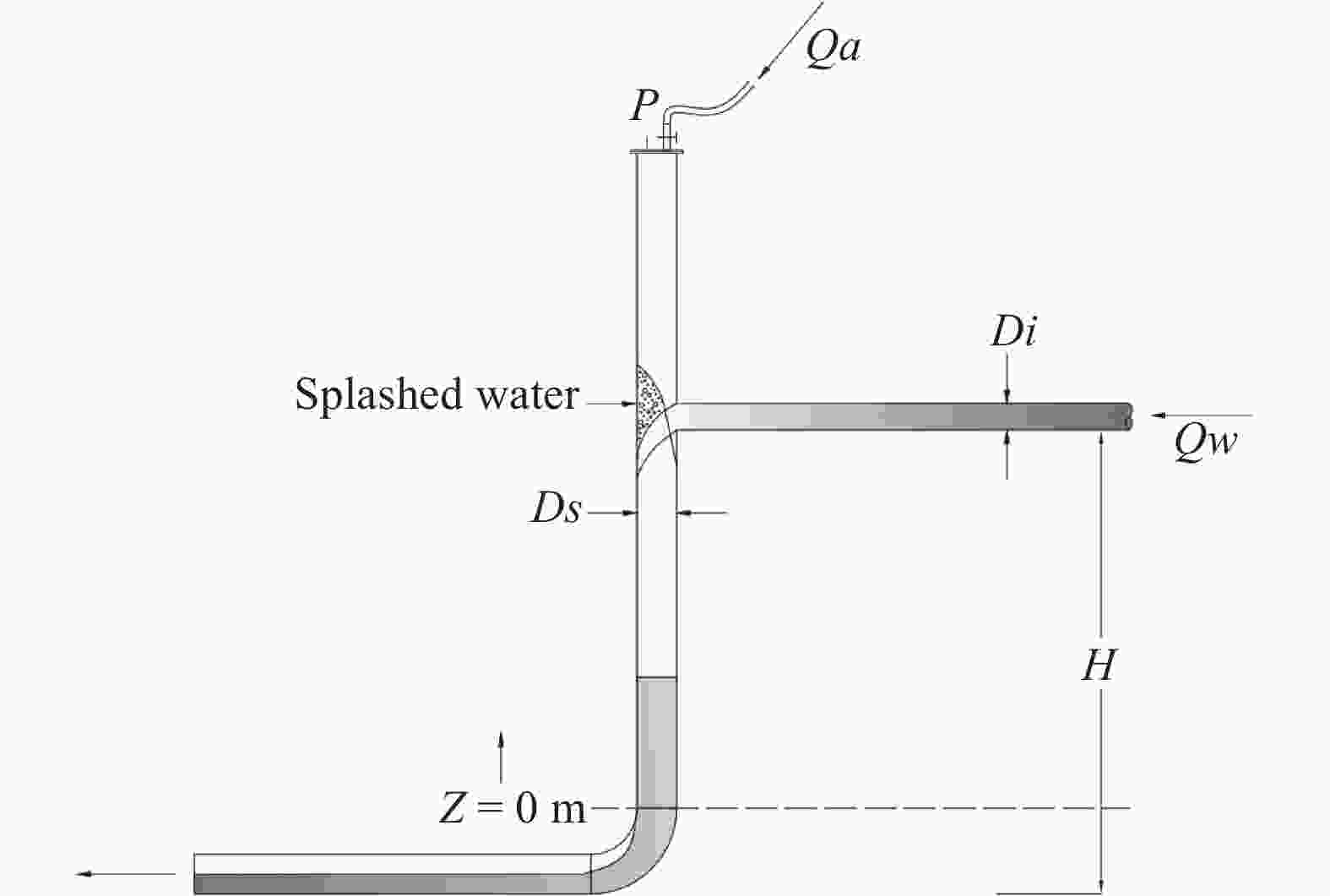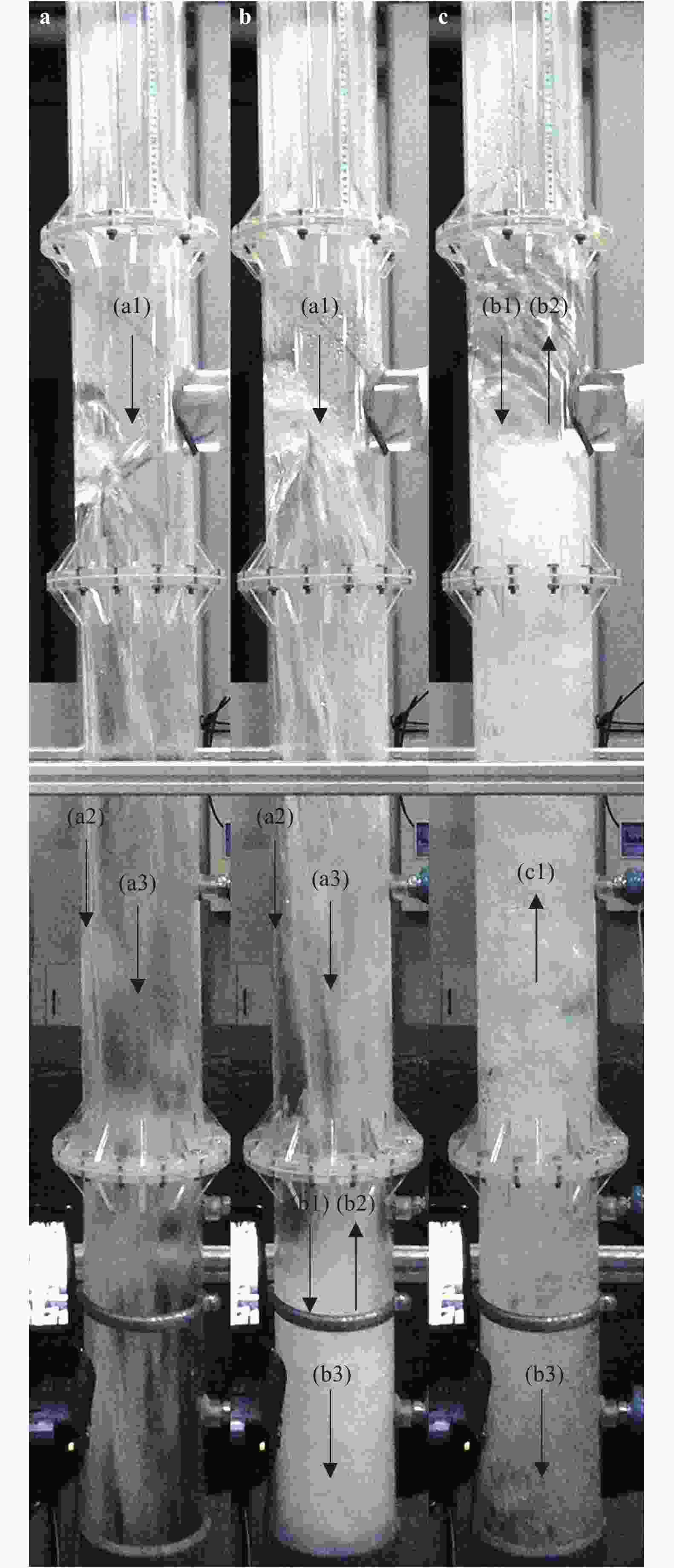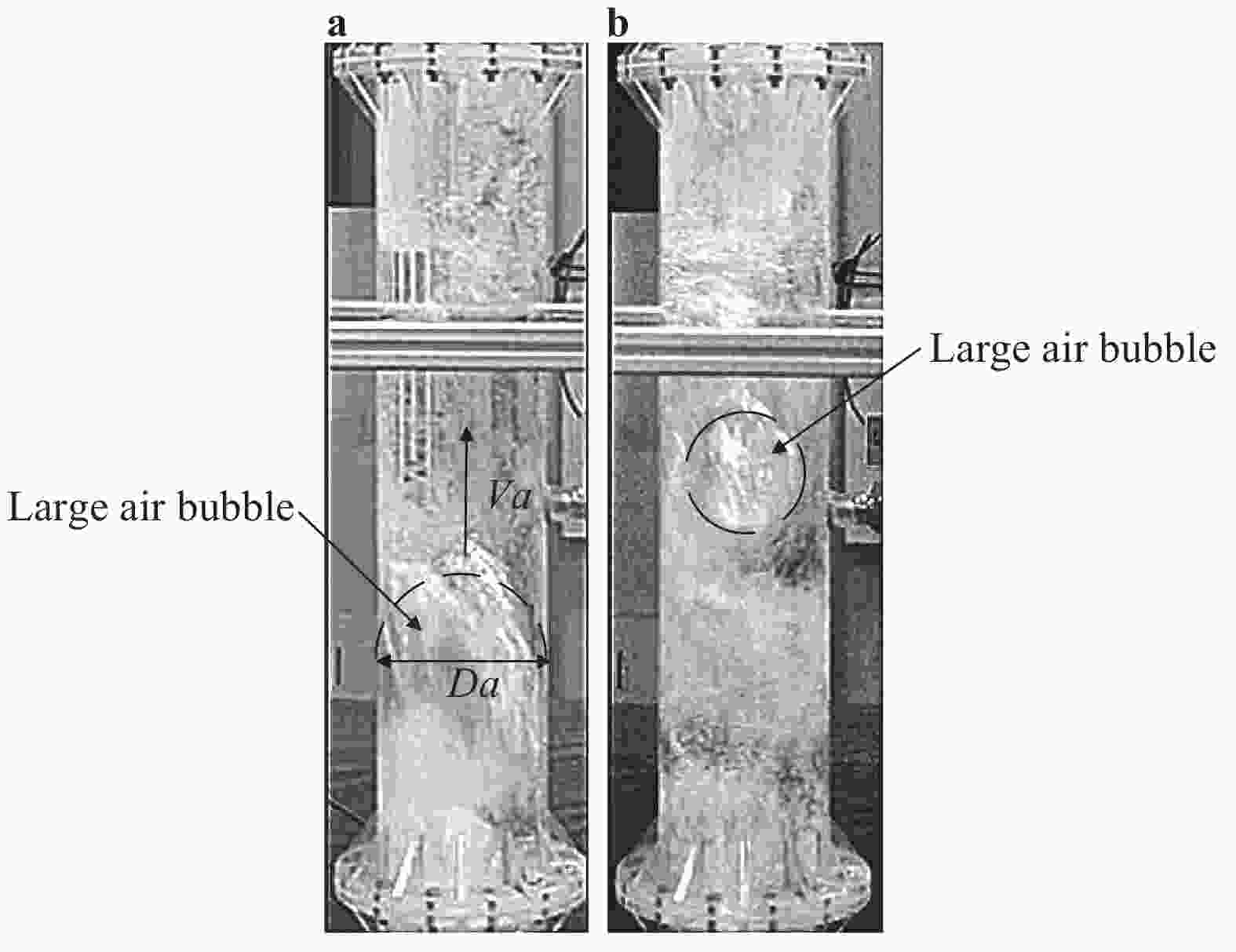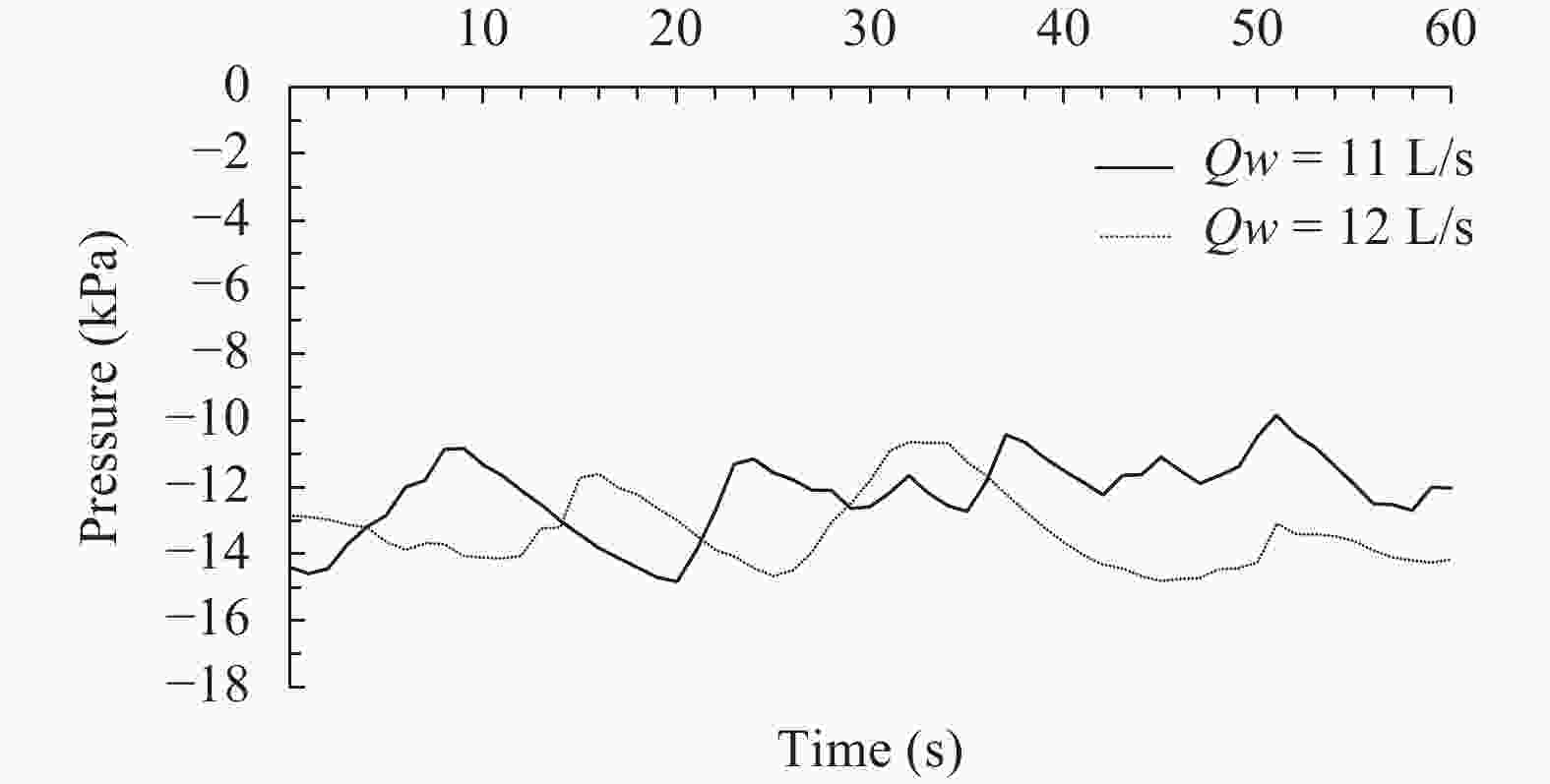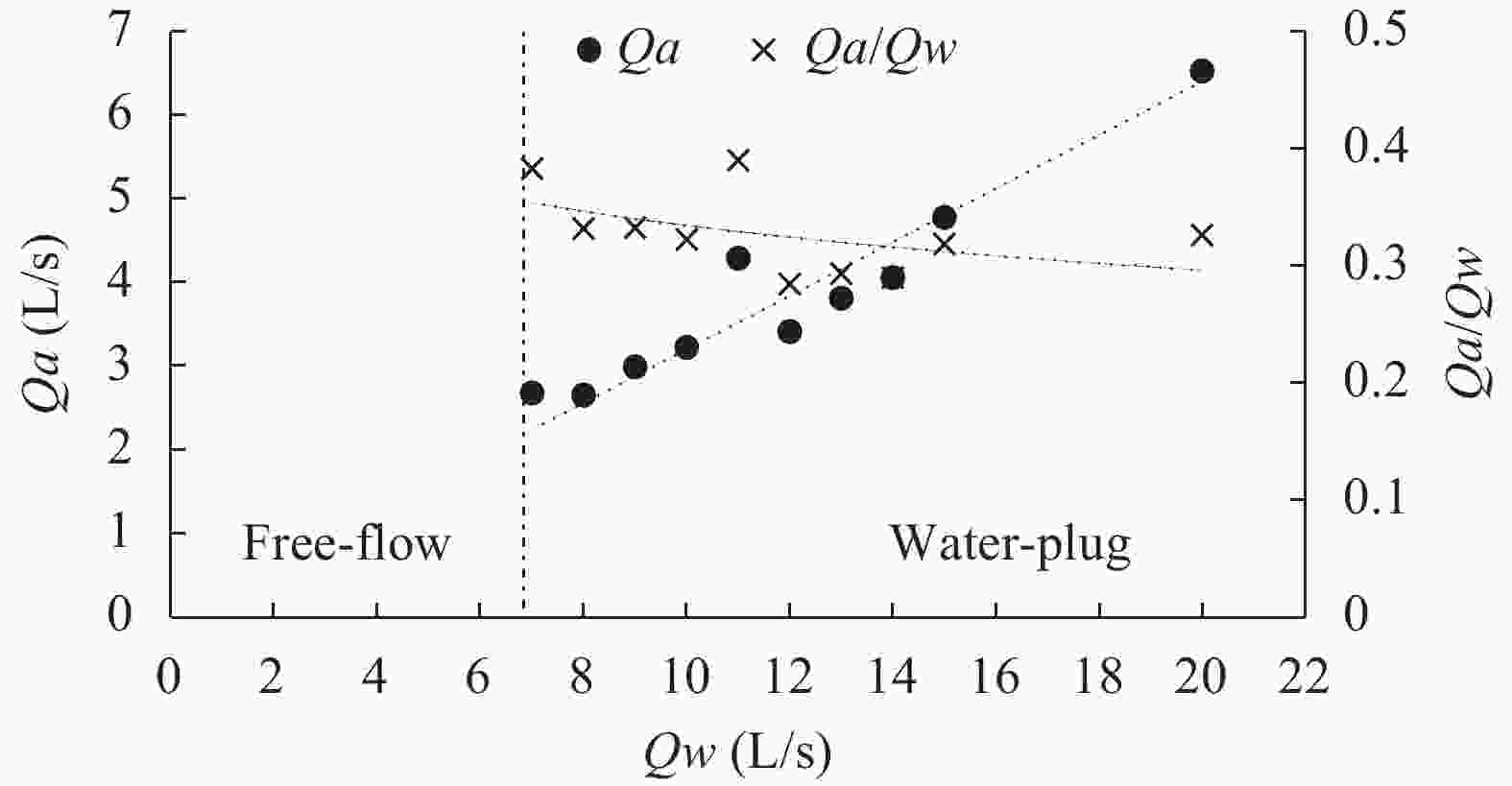Institute of Mechanics,
Chinese Academy of Sciences
2018 Vol.8(5)
column
Display Mode: |
Theoretical and Applied Mechanics Letters 2018, 8(5): 299-303.
doi: 10.1016/j.taml.2018.05.007
Abstract:
The pore configuration in porous medium is assumed to be the randomly distributed cube-like particles which can overlap each other in the periodic cubic domain, and the impact of particle characteristics on the percolation property of these cube-like particle packing systems is analyzed. Firstly, by combining the percolation models and finite-size scaling analysis, three numerical parameters (i.e., percolation transition width \begin{document}$\Delta $\end{document} ![]()
![]()
L, local percolation threshold \begin{document}$\psi $\end{document} ![]()
![]()
c(L), and correlation length exponent \begin{document}$\nu $\end{document} ![]()
![]()
) for the cube-like particle systems with shape parameter s in [1.0, \begin{document}$ +\infty $\end{document} ![]()
![]()
] are derived successively. Then, based on the relation between the percolation threshold \begin{document}$\psi $\end{document} ![]()
![]()
c in infinite space and the local percolation threshold \begin{document}$\psi $\end{document} ![]()
![]()
c(L), the corresponding \begin{document}$\psi $\end{document} ![]()
![]()
c with s in [1.0, \begin{document}$ +\infty $\end{document} ![]()
![]()
] are further determined. It is shown from the study that the characteristics of cube-like particles have significant influence on the global percolation threshold \begin{document}$\psi $\end{document} ![]()
![]()
c of the particle packing systems. As the parameter s increases from 1.0 to \begin{document}$ +\infty $\end{document} ![]()
![]()
, the percolation threshold \begin{document}$\psi $\end{document} ![]()
![]()
c will go down persistently. When the surface of cube-like particles is cubical and spherical, respectively, the minimum and maximum thresholds \begin{document}$\psi $\end{document} ![]()
![]()
c,min and \begin{document}$\psi $\end{document} ![]()
![]()
c,max are obtained.
The pore configuration in porous medium is assumed to be the randomly distributed cube-like particles which can overlap each other in the periodic cubic domain, and the impact of particle characteristics on the percolation property of these cube-like particle packing systems is analyzed. Firstly, by combining the percolation models and finite-size scaling analysis, three numerical parameters (i.e., percolation transition width
Theoretical and Applied Mechanics Letters 2018, 8(5): 304-314.
doi: 10.1016/j.taml.2018.05.005
Abstract:
Traffic rule is a key factor affecting traffic flow and safety. We develop our models, including the cellular automata traffic flow model as well as the linear regression one, aiming at calculating traffic flow and evaluating safety conditions with varied traffic rules. Then, we thoroughly investigate four types of paths in a freeway, namely two straight lanes, three straight lanes, ramps, and roundabouts as case studies and discuss the different traffic rules as comparison. The results demonstrate that " Keep-Right-Except-To-Pass” rule is not as effective as the free rule in promoting traffic flow; however, this rule ensures safety for drivers better than the free rule. Additionally, a new traffic rule, which sets different posted speed limits for adjacent lanes, is proposed to promote better traffic flow with safety requirements satisfied. Furthermore, we apply effective rules and alternatives, left driving norms as well as intelligent system as extension and obtain better results. Finally, model’s sensitivity analysis regarding to probability of decelerating and posted speed limits proves the stability of our results.
Traffic rule is a key factor affecting traffic flow and safety. We develop our models, including the cellular automata traffic flow model as well as the linear regression one, aiming at calculating traffic flow and evaluating safety conditions with varied traffic rules. Then, we thoroughly investigate four types of paths in a freeway, namely two straight lanes, three straight lanes, ramps, and roundabouts as case studies and discuss the different traffic rules as comparison. The results demonstrate that " Keep-Right-Except-To-Pass” rule is not as effective as the free rule in promoting traffic flow; however, this rule ensures safety for drivers better than the free rule. Additionally, a new traffic rule, which sets different posted speed limits for adjacent lanes, is proposed to promote better traffic flow with safety requirements satisfied. Furthermore, we apply effective rules and alternatives, left driving norms as well as intelligent system as extension and obtain better results. Finally, model’s sensitivity analysis regarding to probability of decelerating and posted speed limits proves the stability of our results.
Theoretical and Applied Mechanics Letters 2018, 8(5): 315-319.
doi: 10.1016/j.taml.2018.05.002
Abstract:
Dropshafts are vertical structures widely used in urban drainage systems and buildings for water transportation. In this paper, a physical model study was conducted to investigate the air entrainment in the dropshaft under various flow regimes with and without air ventilation. Observed from the experiments, the air entrainment mechanisms varied with the water flow regimes in the dropshaft. When there was no water plug formed in the dropshaft, air could be supplied directly from downstream. Once the water plug was formed, while without venting, the air was replenished only from downstream intermittently and then in the form of large air bubble traveling upwards to the airspace at the top; while with venting, air was mainly replenished from the dropshaft top and no large air bubble was observed. The experimental results also showed that the amount of entrained air in the dropshaft with venting was greater than that without venting.
Dropshafts are vertical structures widely used in urban drainage systems and buildings for water transportation. In this paper, a physical model study was conducted to investigate the air entrainment in the dropshaft under various flow regimes with and without air ventilation. Observed from the experiments, the air entrainment mechanisms varied with the water flow regimes in the dropshaft. When there was no water plug formed in the dropshaft, air could be supplied directly from downstream. Once the water plug was formed, while without venting, the air was replenished only from downstream intermittently and then in the form of large air bubble traveling upwards to the airspace at the top; while with venting, air was mainly replenished from the dropshaft top and no large air bubble was observed. The experimental results also showed that the amount of entrained air in the dropshaft with venting was greater than that without venting.
Theoretical and Applied Mechanics Letters 2018, 8(5): 320-325.
doi: 10.1016/j.taml.2018.05.006
Abstract:
The intrinsic physical relationship of vorticity between modes A and B in the three-dimensional wake transition is investigated. Direct numerical simulations for the flow past a square-section cylinder are carried out at Reynolds numbers of 180 and 250, associated with modes A and B, respectively. Based on the analysis of spacial distributions of vorticity in the near wake, characteristics of the vertical vorticity in modes A and B are identified. Moreover, the relationship of three vorticity components with specific signs is summarized into two sign laws, as intrinsic physical relationships between two instability modes. By the theory of vortex-induced vortex, such two sign laws confirm that there are two and only two kinds of vortex-shedding patterns in the near wake, just corresponding to modes A and B. In brief, along the free stream direction, mode A can be described by the parallel shedding vertical vortices with the same sign, while mode B is described by the parallel shedding streamwise vortices with the same sign. Finally, it is found out that the \begin{document}$\Pi$\end{document} ![]()
![]()
-type vortex is a basic kind of vortex structure in both modes A and B.
The intrinsic physical relationship of vorticity between modes A and B in the three-dimensional wake transition is investigated. Direct numerical simulations for the flow past a square-section cylinder are carried out at Reynolds numbers of 180 and 250, associated with modes A and B, respectively. Based on the analysis of spacial distributions of vorticity in the near wake, characteristics of the vertical vorticity in modes A and B are identified. Moreover, the relationship of three vorticity components with specific signs is summarized into two sign laws, as intrinsic physical relationships between two instability modes. By the theory of vortex-induced vortex, such two sign laws confirm that there are two and only two kinds of vortex-shedding patterns in the near wake, just corresponding to modes A and B. In brief, along the free stream direction, mode A can be described by the parallel shedding vertical vortices with the same sign, while mode B is described by the parallel shedding streamwise vortices with the same sign. Finally, it is found out that the
Theoretical and Applied Mechanics Letters 2018, 8(5): 326-333.
doi: 10.1016/j.taml.2018.05.003
Abstract:
Lattice Boltzmann method is one of the widely used in multiphase fluid flow. However, the two main disadvantages of this method are the instability of numerical calculations due to the large density ratio of two phases and impossibility of the temperature distribution to be fed back into the velocity distribution function when the temperature is simulated. Based on the combination prescribed by Inamuro, the large density ratio two-phase flow model and thermal model makes the density ratio of the model simulation to be increased to 2778:1 by optimizing the interface distribution function of two-phase which improves the accuracy of differential format. The phase transition term is added as source term into the distribution function controlling two phase order parameters to describe the temperature effect on the gas-liquid phase transition. The latent heat generated from the phase change is also added as a source term into the temperature distribution function which simulates the movement of the flow under the common coupling of density, velocity, pressure and temperature. The density and the temperature distribution of single bubble are simulated. Comparison of the simulation results with experimental results indicates a good agreement pointing out the effectiveness of the improved model.
Lattice Boltzmann method is one of the widely used in multiphase fluid flow. However, the two main disadvantages of this method are the instability of numerical calculations due to the large density ratio of two phases and impossibility of the temperature distribution to be fed back into the velocity distribution function when the temperature is simulated. Based on the combination prescribed by Inamuro, the large density ratio two-phase flow model and thermal model makes the density ratio of the model simulation to be increased to 2778:1 by optimizing the interface distribution function of two-phase which improves the accuracy of differential format. The phase transition term is added as source term into the distribution function controlling two phase order parameters to describe the temperature effect on the gas-liquid phase transition. The latent heat generated from the phase change is also added as a source term into the temperature distribution function which simulates the movement of the flow under the common coupling of density, velocity, pressure and temperature. The density and the temperature distribution of single bubble are simulated. Comparison of the simulation results with experimental results indicates a good agreement pointing out the effectiveness of the improved model.
Theoretical and Applied Mechanics Letters 2018, 8(5): 334-344.
doi: 10.1016/j.taml.2018.05.004
Abstract:
A visualized investigation was carried out on the effect of the diverging angle on the bubble motion and interfacial behavior in a Venturi-type bubble generator. It was found two or three large vortexes formed in the diverging section, resulting in strong reentrant jet flow in the front of the bubbles or slugs rushing out of the throat. The jet flow in return bumps into the ongoing bubbles or slugs, leading to strong interaction between the gas and liquid phases. The diverging angle has significant influence on the reentrant flow process and the performance of the bubble generator as well. Increasing the diverging angle results in the reentrant flow moving further forward to the upstream and intensifies the interaction between the two phases. As a consequence, the breakup or collapse of bubbles becomes more violent, whereby finer bubbles are generated. As such, the reentrant flow strongly links to the performance of the Venturi channel taken as a bubble generator, and that a moderate increase in the diverging angle can improve its performance without additional increase in flow resistance like that by increasing liquid flow rate.
A visualized investigation was carried out on the effect of the diverging angle on the bubble motion and interfacial behavior in a Venturi-type bubble generator. It was found two or three large vortexes formed in the diverging section, resulting in strong reentrant jet flow in the front of the bubbles or slugs rushing out of the throat. The jet flow in return bumps into the ongoing bubbles or slugs, leading to strong interaction between the gas and liquid phases. The diverging angle has significant influence on the reentrant flow process and the performance of the bubble generator as well. Increasing the diverging angle results in the reentrant flow moving further forward to the upstream and intensifies the interaction between the two phases. As a consequence, the breakup or collapse of bubbles becomes more violent, whereby finer bubbles are generated. As such, the reentrant flow strongly links to the performance of the Venturi channel taken as a bubble generator, and that a moderate increase in the diverging angle can improve its performance without additional increase in flow resistance like that by increasing liquid flow rate.
Theoretical and Applied Mechanics Letters 2018, 8(5): 351-354.
doi: 10.1016/j.taml.2018.05.008
Abstract:
We solve the local uniaxial tension of an infinite rod in the framework of non-ordinary state-based peridynamics. The singular solutions of stress and displacement are acquired. When the influencing range of the window function approaches zero, these two solutions will return to the solutions of the classical elasticity. The analysis shows that the singularities of the solutions stem from such a feature of the window function that must be represented by a rapidly decreasing function in physics. Contrary to the classical elasticity, the stress solution of peridynamics is smoother than the displacement solution. In addition, a criterion used to select the window function is proposed in this paper.
We solve the local uniaxial tension of an infinite rod in the framework of non-ordinary state-based peridynamics. The singular solutions of stress and displacement are acquired. When the influencing range of the window function approaches zero, these two solutions will return to the solutions of the classical elasticity. The analysis shows that the singularities of the solutions stem from such a feature of the window function that must be represented by a rapidly decreasing function in physics. Contrary to the classical elasticity, the stress solution of peridynamics is smoother than the displacement solution. In addition, a criterion used to select the window function is proposed in this paper.
Theoretical and Applied Mechanics Letters 2018, 8(5): 355-360.
doi: 10.1016/j.taml.2018.05.001
Abstract:
Reaction-diffusion (RD) equation was often used to investigate the pattern dynamics, but telegraph reaction-diffusion (TRD) system was seldom studied. In this paper, the Izhikevich model was modified to explain some biological mechanisms by RD and TRD in neuronal cluster. Then a new condition under which the system loses stability was proposed and the effect of parameters, diffusion, memory and steady state were considered on the process of neuronal spiking. The method presented is a novel approach to investigate the pattern dynamics of biological systems. Finally, simulations are carried out to validate our theoretical results.
Reaction-diffusion (RD) equation was often used to investigate the pattern dynamics, but telegraph reaction-diffusion (TRD) system was seldom studied. In this paper, the Izhikevich model was modified to explain some biological mechanisms by RD and TRD in neuronal cluster. Then a new condition under which the system loses stability was proposed and the effect of parameters, diffusion, memory and steady state were considered on the process of neuronal spiking. The method presented is a novel approach to investigate the pattern dynamics of biological systems. Finally, simulations are carried out to validate our theoretical results.
Theoretical and Applied Mechanics Letters 2018, 8(5): 345-350.
doi: 10.1016/j.taml.2018.05.009
Abstract:
This letter reports inlet flow disturbance effects on direct numerical simulation of incompressible round jet at Reynolds number 2500. The simulation employs an accurate projection method in which a sixth order biased upwind difference scheme is used for spatial discretization of nonlinear convective terms, with a fourth order central difference scheme used in the discretization of the divergence of intermediate velocity. Carefully identifying reveals that the inlet flow disturbance has some influences on the distribution pattern of mean factor of swirling strength intermittency. With the increase of inlet disturbance magnitude jet core cone slightly shortens, observable differences occur in the centerline velocity and its fluctuations, despite the negligible impacts on the least square fitted centerline velocity decay constant (Bu) and distribution parameter (Ku) for velocity profile in self-similar region.
This letter reports inlet flow disturbance effects on direct numerical simulation of incompressible round jet at Reynolds number 2500. The simulation employs an accurate projection method in which a sixth order biased upwind difference scheme is used for spatial discretization of nonlinear convective terms, with a fourth order central difference scheme used in the discretization of the divergence of intermediate velocity. Carefully identifying reveals that the inlet flow disturbance has some influences on the distribution pattern of mean factor of swirling strength intermittency. With the increase of inlet disturbance magnitude jet core cone slightly shortens, observable differences occur in the centerline velocity and its fluctuations, despite the negligible impacts on the least square fitted centerline velocity decay constant (Bu) and distribution parameter (Ku) for velocity profile in self-similar region.
 Submit a Paper
Submit a Paper
 Subscription
Subscription
News
MORE+
Call for Papers
MORE+
- Crossing-Mechanics Driven by Big Data
- Machine learning in the fluid mechanics research of wind energy
- Mechanics of Origami/Kirigami structures and metamaterials
- New insights and perspectives on impact biomechanics for human tissues: from injury prevention, protection to protective equipment
- Environmental Mechanics for Extreme Natural Events



